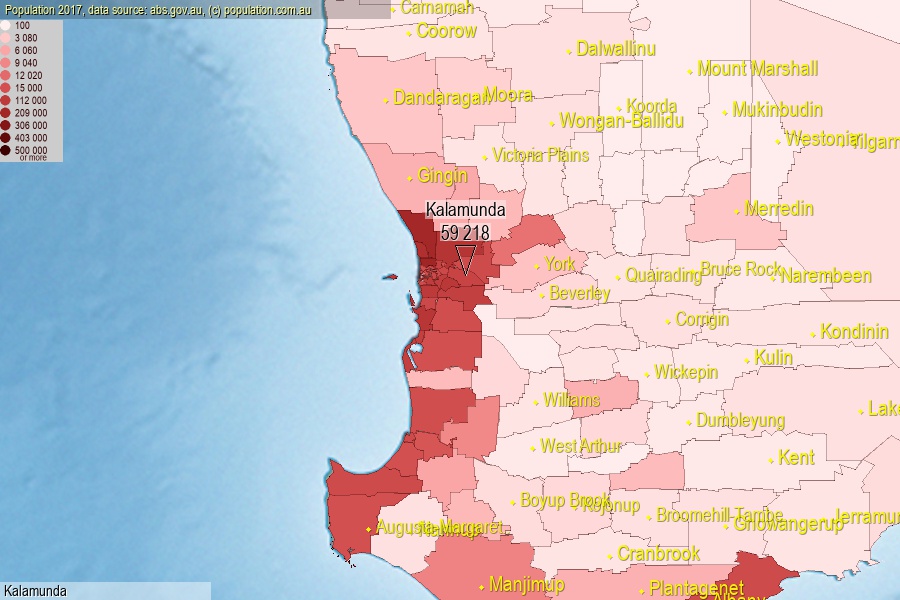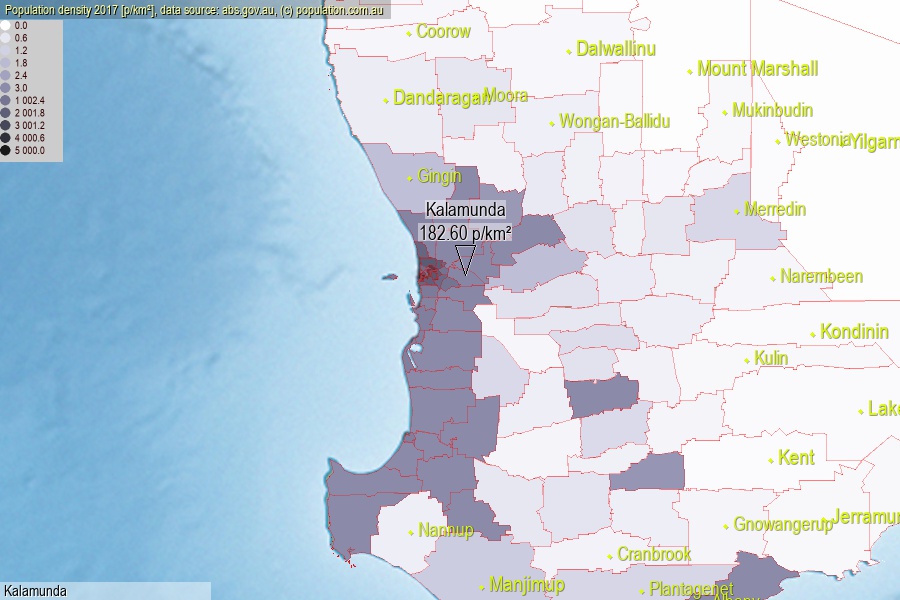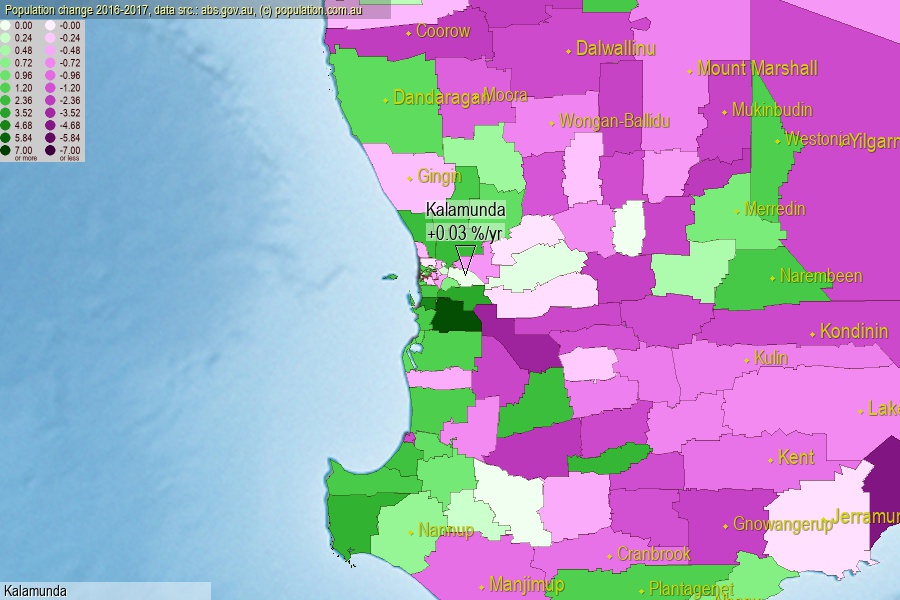 population.com.au
population.com.auLast official estimated population of Kalamunda City (as Local Government Area) was 59 218 people (on 2017-06-30)[2]. This was 0.24% of total Australian population and 2.285% of WA population. Area of Kalamunda is 324.30 km², in this year population density was 182.60 p/km² . If population growth rate would be same as in period 2016-2017 (+0.03%/yr), Kalamunda population in 2025 would be 59 354. [0]



Click to enlarge. Kalamunda is located in the center of the images.
Population [people], population density [p./km²] and population change [%/year] [2]
[1996-2001] +0.09 %/Y
[2001-2002] +0.66 %/Y
[2002-2003] +0.73 %/Y
[2003-2004] +0.99 %/Y
[2004-2005] +2.29 %/Y
[2005-2006] +0.73 %/Y
[2006-2007] +2.21 %/Y
[2007-2008] +1.86 %/Y
[2008-2009] +1.77 %/Y
[2009-2010] +1.99 %/Y
[2010-2011] +1.66 %/Y
[2011-2012] +2.08 %/Y
[2012-2013] +1.65 %/Y
[2013-2014] +0.84 %/Y
[2014-2015] +0.31 %/Y
[2015-2016] -0.16 %/Y
[2016-2017] +0.03 %/Y
[0] Calculated with linear interpolation from officially estimated population
[1] Read more about LGA and Australian Statistical Geography Standard (ASGS) on abs.gov.au
[2] Population data from Australian Bureau of Statistics (Population and density: 2017; change: 2016-2017)
[3] Digital Boundaries: Australian Statistical Geography Standard (ASGS) 2016.